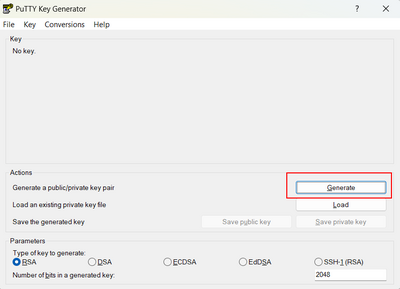Create a volume (Advanced Console): Difference between revisions
Jump to navigation
Jump to search
(Created page with "Test") |
No edit summary |
||
| Line 1: | Line 1: | ||
<strong>This article will help you create a new block storage volume.</strong> | |||
Volumes are the 'storage disks' in the DataTenant Cloud, like VMDKs in VMWare ESX or VHDs in Microsoft Hyper-V. If you already have a virtual machine running, you can create blank volumes and attach them to your VM for storage. Otherwise, you can create a volume from an image, which will contain the operating system you selected for a new VM. | |||
== Create a volume == | |||
Begin by downloading [https://www.chiark.greenend.org.uk/~sgtatham/putty/latest.html PuTTY] and installing it onto a Windows or Mac. This will automatically install PuTTYgen, which is a tool for creating keypairs. Open PuTTYgen, and click the 'Generate' option. | |||
[[File:Putty_Generate.png|border|400px]] | |||
Revision as of 15:33, 15 May 2024
This article will help you create a new block storage volume.
Volumes are the 'storage disks' in the DataTenant Cloud, like VMDKs in VMWare ESX or VHDs in Microsoft Hyper-V. If you already have a virtual machine running, you can create blank volumes and attach them to your VM for storage. Otherwise, you can create a volume from an image, which will contain the operating system you selected for a new VM.
Create a volume
Begin by downloading PuTTY and installing it onto a Windows or Mac. This will automatically install PuTTYgen, which is a tool for creating keypairs. Open PuTTYgen, and click the 'Generate' option.
